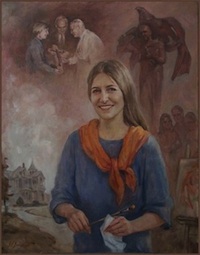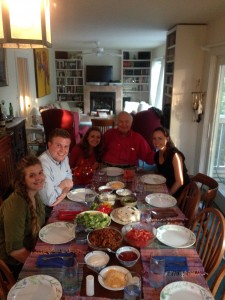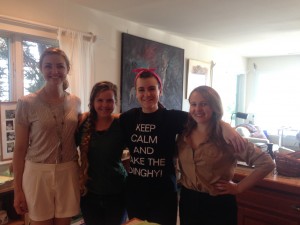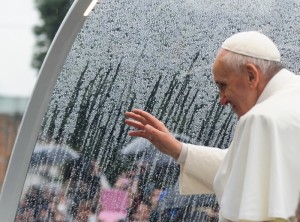Why They Hate Pro-Lifers So
/Why They Hate Pro-Lifers So
By Michael at Patheos.com on August 19, 2015
The pro-life argument is overpoweringly clear to me. But in argument against supporters of legalized abortion, I was always puzzled because I could not grasp their reasons. Maybe they didn’t understand their own reasons, either. I seldom heard reasons for their point of view, but far more often intense emotional blasts. “Keep your rosaries off my ovaries!”
Pro-choicers do not make it easy to attribute reasonableness to their presentation of these matters. But why, I ask myself, do they hate pro-lifers so much?
Amazingly, I just discovered a very persuasive explanation of why so many women argue that it is right and good to have an abortion.
The Caring Foundation produced an empirical study almost two decades ago which recently arrested my attention: “Abortion: The Least of Three Evils – Understanding the Psychological Dynamics of How Women Feel About Abortion.” Two main findings of the study startled me, but they are also fairly obvious once one sees them from the point of view of the young women in the study. It is always a good idea to stand in the other person’s shoes. Why for so long had I failed to do so?
One of the stunningly obvious perceptions of those in favor of abortion is summarized by Harvard-educated Paul Swope: “Women do not see any ‘single’ good resulting from an unplanned pregnancy. Instead they must weigh what they perceive as three evils, namely, motherhood, adoption, and abortion.”
To such women, having an unplanned child “represents a threat so great to modern women that it is perceived as the equivalent to a ‘death of self.’” This reaction may be emotional and subconscious, but it generates a feeling that one’s life is over.
Swope explains that this is because many young women have developed an intensely narrow vision of their own identity: “going through college, getting a degree, obtaining a good job, even getting married someday.” The sudden intrusion of motherhood afflicts them as “a complete loss of control over their present and future selves. It shatters the sense of who they are and will become, and thereby paralyzes their ability to think.”
At this point, such deeply troubled young women are not likely to perceive a sharp-edged choice of either “I must endure an embarrassing pregnancy” or “I must destroy the life of an innocent child.”
“Instead,” Swope writes, “their perception of their choice is ‘my life is over’ or ‘the life of this new child is over.’ Given this perspective, the choice of abortion becomes one of self-preservation.” Thus it is not so hard to see that, to a young woman facing an unplanned pregnancy, abortion can seem like the most morally defensible option.
The second option, adoption, is seen as the most “evil” of the three, for it entails two devastating disappointments – deaths, even: First, the young woman who accepts motherhood by carrying the baby to term dies to all her other plans for her future life.
Worse, if she gives the baby up for adoption, she perceives herself as a bad mother, someone gives her own child away to strangers. So the second death the stricken young woman lives through is the loss of her child through abandonment. Her worries multiply. Her baby might be abused by strangers. The uncertainty of her child’s future and year-to-year development haunts her, and she must always fear the possibility of her child searching for and finding her many years later, exposing the painful secret to others who never knew it.
Many of us know a young woman who has carried her child to term and happily seen that boy or girl adopted by good and caring parents who very much want a child. Alas, that is not the way so many tormented women envision the scenario.
Mr. Swope reports more surprising findings. All of the women surveyed who called themselves pro-choice agreed that “abortion is killing.” In that respect, the pro-life movement seems to have driven home the basic reality of abortion, even among pro-choicers.
A second surprise is that most of the women surveyed “believe that abortion is wrong, an evil, and that God will punish a woman who makes that choice.”
Third, “these women feel that God will ultimately forgive the woman, because He is a forgiving God, because the woman did not intend to get pregnant, and because a woman in such crisis has no real choice. The perception is that the woman’s whole life is at stake.”
With the perspective of the young women surveyed, I can see how someone facing a crisis pregnancy and opting for abortion might think of herself as being courageous. I can see how she may come to reason that abortion is the least of three evils, because she takes it to be her highest good that she must preserve her own vision of her life.
While I do not accept that this vision of human life is at all adequate and fully honest, it does help me to see why such women are “deeply resentful toward the pro-life movement” and why they perceive it as “uncaring and judgmental.”
Mr. Swope’s full argument is contained in his brilliant essay, “Abortion: A Failure to Communicate,” which appeared in the April 1998 issue of First Things. I do not know how I missed it, but it came into my hands only during the last month.
If we who believe in life are ever to join in real conversation with those who call themselves pro-choice and feel keen resentment toward us, we must walk for a while in their moccasins, and figure out why the traditional arguments we had been using are not getting through, and we must devise new arguments that penetrate their very passionate defenses – passionate, because they think that they are fighting for their own self-preservation.
I am grateful to Paul Swope for his work. It would have helped me greatly if I had not missed it seventeen years ago.








![By Eduardo Martín Schweitzer Benegas (Own work) [CC BY-SA 4.0], via Wikimedia Commons](http://wp.production.patheos.com/blogs/michaelnovak/files/2015/07/Jacques_Maritain-220x300.jpg)
